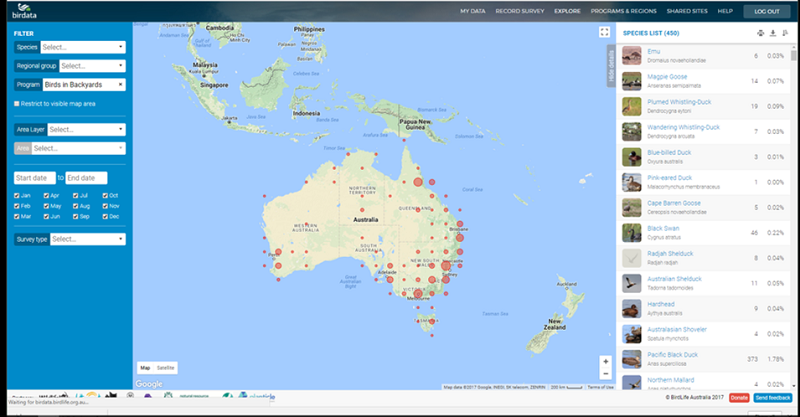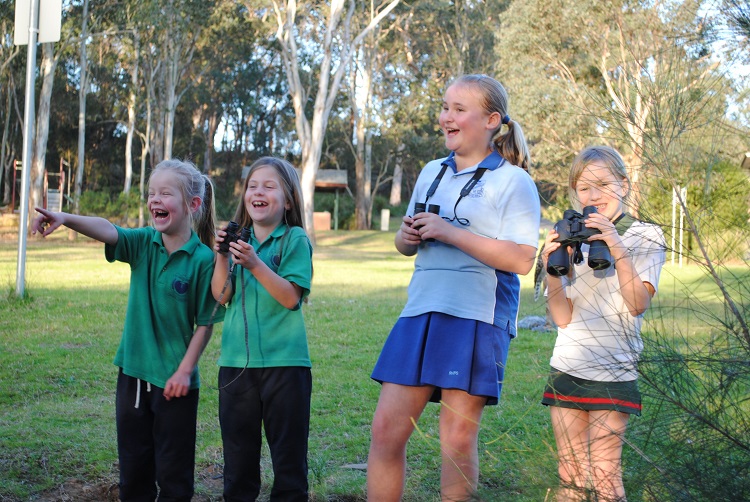You are here
Home ›The road to Birdata
We are thrilled that the Birds in Backyards surveys are now on Birdata! By joining Birdata, the surveys are now part of the way BirdLife Australia collaboratively and scientifically collects data to gain insight and protect Australia's birds.
Over the past year we’ve convened a research committee of experts from around the country to look at the past 10 years of backyard bird data and help shape the questions we ask in the new surveys. While the basic survey remains unchanged – allowing us to make comparisons over time with previous data – some exciting new features have been added, including:
- You can do surveys that include more than just a “typical” backyard — you can survey your local park or even your friends´ bush block
- You can report incidental or single species sightings, breeding events and interactions between birds — did you see a Powerful Owl roosting in a tree during your evening walk or Noisy Minors chasing another bird?
- You can update your site characteristics each time you do a new survey — have you planted a tree, added a nest box or removed some weeds?
- To help you get started with your bird sightings, there is a pre-populated dynamic list of birds commonly sighted in your survey area
- There are options for shared/fixed sites and participation in projects
- Data is available from the past 10 years, allowing you to explore your neighbourhood and see your own data if you have participated in the past
Exploring your data
Last month, a total of 20,800 surveys and 209,492 bird sighting records were imported into Birdata. After checking the records for errors, including location accuracy (e.g. has the bird been sighted within its plausible range?) and removing duplicate records, a whopping 98% of the original dataset was imported and is now available to be viewed on the Explore page on Birdata. BirdLife Australia’s Head of Research, James O’Connor says “the Backyard Bird Surveys are a fantastic addition to BirdLife Australia’s growing knowledge base and represent valuable data from our urban and human-populated areas”.
We’ll be aiming to update the website and send reports in the newsletters every few months as we go through our findings.
birdata explore biby screen shot.png

Become a Birds in Backyards surveyor today!
Getting started is easy. Simply log into Birdata by entering your BirdLife Australia username and password, which are the same as your Birds in Backyards account. If you have forgotten your password, click here and enter the email address you use for Birds in Backyards (this is the same email address where your newsletters are sent).
If you do not have a BirdLife Australia login, you can register on Birdata. Remember to scroll down and click on the Birds in Backyards e-news option!
You can also submit your Birds in Backyards surveys on the Birdata app available now for both Android and iPhone. Note that site characteristics will need to be added to your survey afterwards via the web portal.
Why do a survey? And what do we use your data for?
Living in the city can be tough. Birds in Backyards uses your survey data to help us build a picture of what the birds that share our spaces – whether big or small, urban or rural, private or public – need to survive and thrive alongside us. This includes information on which birds are in your site, what kind of habitat is available to them, and even information about you, such as providing water for birds or owning a pet.
The aims of our surveys are two-fold;
We send results to Birds in Backyards members in our e-Newsletters, use it in seminars and workshops conducted by staff and volunteers around the country and update the website regularly with survey findings. We also use survey results for specific projects such as our Powerful Owl project or at the request of different universities, schools or local councils.
Within the Birds in Backyards family we also have a number of students at different times who are using the databases as part of their projects. See our Research pages for examples of student projects that have been conducted.
birdwatching kids.jpg










